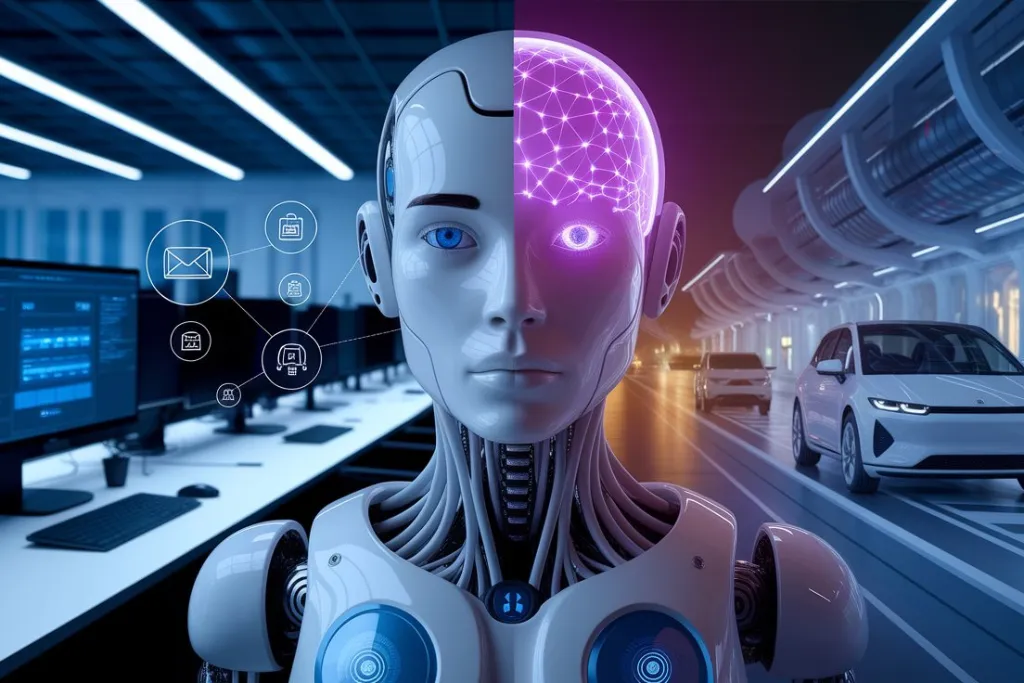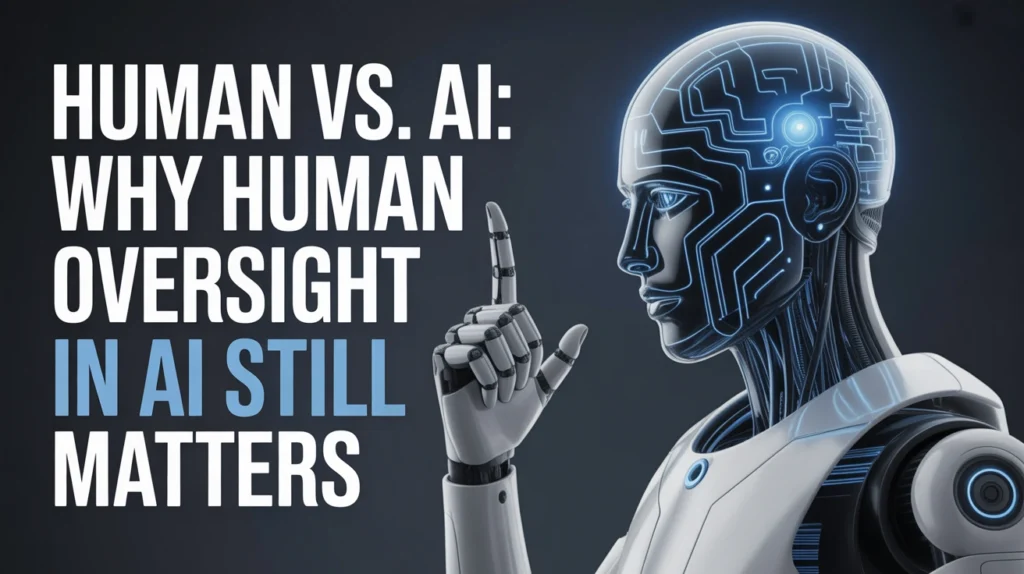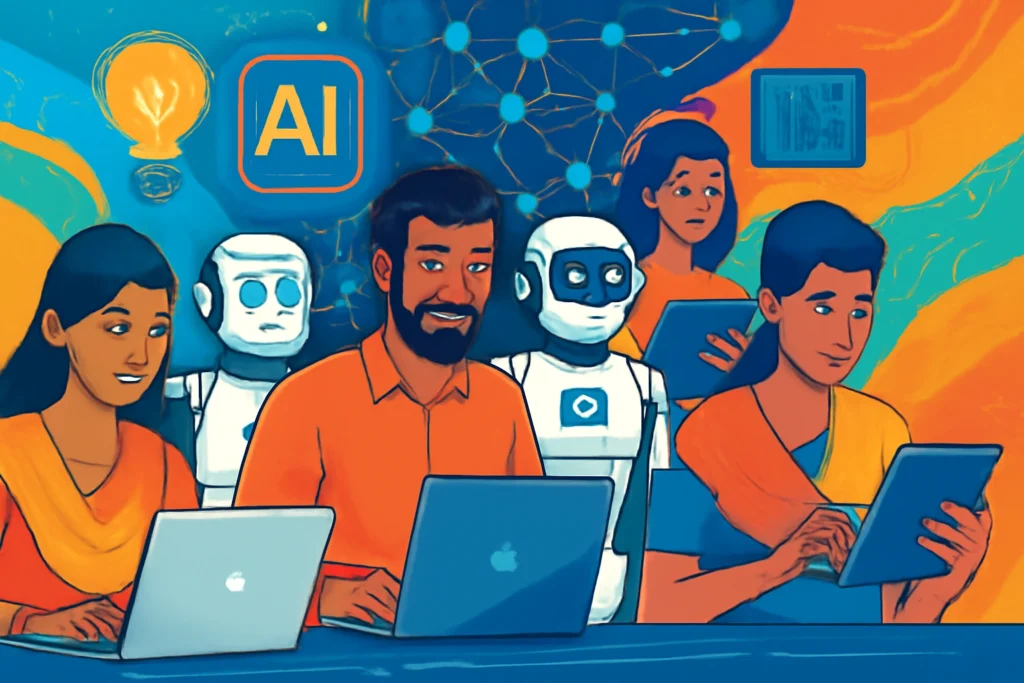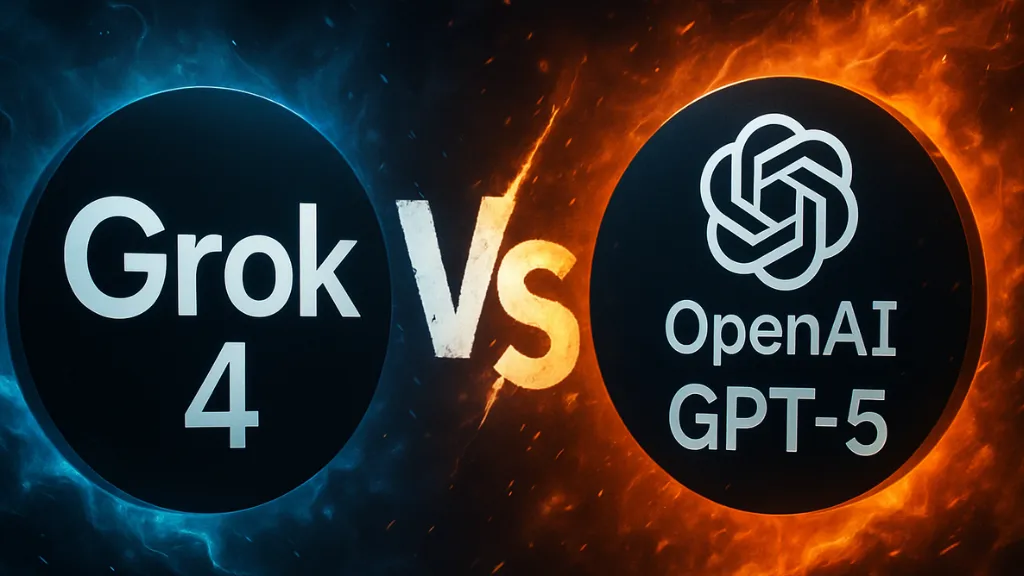Are you confused about the difference between an AI agent vs agentic AI and wondering which technology could revolutionize your business in 2025? You’re not alone. As artificial intelligence rapidly evolves, these two terms are creating significant buzz in tech circles, yet many people use them interchangeably without understanding their fundamental differences. This comprehensive guide will clear up the confusion and help you understand exactly what separates these transformative technologies.
By reading this blog, you’ll discover the key distinctions between AI agents and agentic AI, learn how each technology works with real-world examples, and understand which solution fits your specific needs. Whether you’re a business owner looking to implement AI solutions or a tech professional seeking to expand your knowledge, this article will provide the clarity you need to make informed decisions about these game-changing technologies.
What is an AI Agent?
An AI agent is a software program that can interact with its surroundings, gather information, and use that information to complete tasks on its own to achieve goals set by humans. Think of AI agents as highly efficient digital assistants designed to handle specific, well-defined tasks with precision and consistency.
I have read extensive research on AI implementation, and studies show that AI agents operate through a structured four-step process:
- Perceiving the Environment: AI agents gather information through various means, like sensors (cameras, microphones), user input (text, voice commands), or databases and documents
- Processing Information: They analyze collected data using pre-set rules or machine learning algorithms to determine the best course of action
- Taking Action: Once they make a decision, they perform the required task, such as answering customer queries or controlling smart devices
- Learning and Improving: Some AI agents can learn from past experiences through reinforcement learning to refine their responses over time
Key Characteristics of AI Agents
AI agents excel in narrow, task-specific automation. They function within strict guidelines and process inputs based on preprogrammed rules, making them predictable but limited in scope. These systems are reactive, responding to specific inputs rather than proactively initiating actions.
Real-World Examples of AI Agents
Let me share practical examples that demonstrate how AI agents work in everyday applications:
- Customer Service Chatbots: Rule-based systems like Zendesk’s AI-powered chatbot that answer frequently asked questions and guide customers through predefined processes
- Voice Assistants: Siri and Google Assistant that respond to voice commands for simple tasks like setting reminders or checking the weather
- Email Management Tools: Gmail Smart Compose which suggests phrases and helps users respond to emails faster
- Code Assistance: GitHub Copilot, which helps software developers by suggesting code snippets and providing debugging assistance
- Recommendation Systems: Netflix or Spotify algorithms that suggest content based on viewing or listening history
What is Agentic AI?
Agentic AI is an AI system that acts autonomously, adapts in real time, and solves multi-step problems based on context and objectives. Unlike traditional AI agents, agentic AI represents a paradigm shift toward true artificial intelligence autonomy, capable of independent decision-making and goal-directed behavior.
Studies show that agentic AI operates through a sophisticated five-step process:

The Five-Step Agentic AI Process
- Perceive: AI agents gather and decode information from sources like sensors, databases, and interfaces to extract meaningful insights
- Reason: Large language models guide the reasoning process, understanding tasks, and crafting solutions while coordinating specialized models
- Act: Agents perform tasks by connecting with external systems through APIs, with built-in guardrails ensuring safety and compliance
- Learn: Systems evolve through feedback and improve with every interaction, refining decisions and processes continuously
- Collaborate: Multiple agents work together to handle complex, multi-faceted challenges across different domains
Core Features of Agentic AI
Based on my research of leading implementations, agentic AI systems are distinguished by four main features:
- Autonomous Decision-Making: These systems analyze situations, decide what to do, and act independently without constant human input
- Goal-Driven Actions: Rather than just following instructions, agentic AI works toward specific objectives by planning and executing multi-step tasks
- Learning and Adapting: Instead of static algorithms, agentic AI learns from interactions and outcomes, improving performance in real-time
- Advanced Reasoning: These systems can connect multiple systems, coordinate across different tools, and autonomously manage complex workflows
AI Agent vs Agentic AI: 7 Critical Differences That Define the Future

Understanding the distinctions between an AI agent vs agentic AI is crucial for selecting the right technology for your needs. Here are the fundamental differences I’ve identified through extensive analysis:
1. Level of Autonomy: Following Rules vs. Making Decisions
AI Agents: Function within strict guidelines, processing inputs and responding based on preprogrammed rules. They’re predictable but fundamentally limited by their coded parameters.
Agentic AI: Goes beyond executing commands by determining objectives, refining strategies, and adapting based on external factors dynamically.
Example: An AI agent in customer support follows a script to answer queries. Agentic AI analyzes customer sentiment, prioritizes urgent issues, and improves responses over time without human intervention.
2. Goal Handling: Reactive vs. Proactive Behavior
AI Agents: Follow fixed objectives defined at design time and wait for user input to react accordingly.
Agentic AI: Can generate, revise, or prioritize goals dynamically and even initiate interactions or propose new actions.
Example: A traditional chatbot waits for customer questions. An agentic AI system proactively identifies potential customer issues and suggests preventive solutions.
3. Environmental Adaptability: Structured vs. Dynamic
AI Agents: Excel in narrow, structured, and predictable environments where rules remain consistent.
Agentic AI: Thrives in open-ended, dynamic, and often multi-modal environments that require real-time adaptation.
Example: A rule-based trading system follows predetermined market conditions. An agentic AI trading system adapts to unprecedented market volatility and creates new trading strategies autonomously.
Real-World Applications: Where Each Technology Excels
AI Agent Applications in Practice
Customer Support Automation: Companies like Zendesk use AI agents to handle routine customer inquiries, providing instant responses to frequently asked questions while maintaining consistency across interactions.
Personal Productivity: GitHub Copilot serves as an AI agent that assists developers by suggesting code completions and helping with debugging, significantly improving coding efficiency.
Smart Home Management: Voice assistants act as AI agents, controlling devices and responding to simple commands like “turn off the lights” or “set an alarm for 7 AM.”
Agentic AI Applications Transforming Industries
Healthcare Decision Support: IBM’s Watson Health uses agentic AI to analyze massive amounts of healthcare data, learning from new information to offer insights that help doctors make more informed treatment decisions.
Autonomous Vehicles: Tesla’s Full Self-Driving system represents agentic AI that continuously learns from driving environments, makes split-second decisions, and improves safety protocols without human intervention.
Supply Chain Optimization: Amazon’s Warehouse Robots demonstrate agentic AI capabilities by autonomously navigating complex environments, adapting to changing conditions, and coordinating with other robots to optimize logistics.
Cybersecurity: Darktrace employs agentic AI to autonomously detect, respond to, and learn from potential cyber threats in real-time, adapting to new attack patterns without manual updates.
When to Choose AI Agents vs. Agentic AI
Based on my analysis of successful implementations across various industries, here’s a practical guide for choosing between these technologies:

Choose AI Agents When:
- You need predictable, consistent results for well-defined processes
- Your tasks are repetitive and rule-based with clear input-output relationships
- Human oversight is readily available and preferred
- You want lower implementation costs and simpler maintenance requirements
- Compliance and control are critical factors in your industry
Choose Agentic AI When:
- Your environment is dynamic and unpredictable, requiring real-time adaptation
- You need autonomous problem-solving capabilities across multiple domains
- Complex decision-making involving multiple variables and stakeholders is required
- You want systems that improve over time without manual programming updates
- Minimal human intervention is preferred for operational efficiency
The Technology Behind the Innovation
AI Agent Architecture
AI agents typically rely on rule-based systems or machine learning models trained on specific datasets. They use conditional logic to process inputs and generate appropriate responses within their programmed scope.
Agentic AI Architecture
Agentic AI systems utilize multi-agent collaboration, dynamic task decomposition, persistent memory, and orchestrated autonomy. These systems leverage advanced technologies, including:
- Large Language Models (LLMs) for reasoning and communication
- Reinforcement Learning for continuous improvement
- Natural Language Processing for human-like interaction
- Computer Vision for Environmental Perception
- Multi-modal Learning to integrate text, images, audio, and video data
Future Outlook: The Evolution Continues
Studies show that the agentic AI market is projected to grow from $28 billion in 2024 to $127 billion by 2029, representing a significant shift toward autonomous AI systems[previous conversation context]. This growth reflects increasing demand for systems that can operate independently in complex, dynamic environments.
I have read reports indicating that 80% of organizations are exploring autonomous agent development[previous conversation context], with particular momentum in sectors requiring sophisticated decision-making capabilities.
Emerging Trends to Watch
- Multi-Agent Orchestration: Systems where multiple AI agents collaborate under agentic AI coordination
- Industry-Specific Solutions: Tailored applications for healthcare, finance, manufacturing, and cybersecurity
- Enhanced Safety Protocols: Advanced guardrails and ethical AI guidelines for autonomous systems
- Hybrid Implementations: Combining AI agents for specific tasks with agentic AI for overall orchestration
Making the Right Choice for Your Organization
The decision between an AI agent vs agentic AI isn’t necessarily binary. Many successful organizations implement a hybrid approach, using AI agents for predictable, well-defined tasks while leveraging agentic AI for complex decision-making and adaptive coordination.
Consider starting with AI agents for immediate automation needs where you require reliable, consistent results. As your organization becomes more comfortable with AI integration and your processes mature, you can gradually introduce agentic AI for more sophisticated applications requiring autonomous decision-making.
The key is understanding that both technologies serve crucial roles in the modern AI ecosystem. AI agents provide the foundation for reliable task automation, while agentic AI offers the intelligence and adaptability needed for navigating complex, dynamic business environments.
Whether you choose AI agents, agentic AI, or a strategic combination of both, success depends on aligning the technology with your specific business objectives, operational requirements, and long-term strategic goals. The organizations that thrive in the AI-powered future will be those that effectively leverage these powerful technologies to drive innovation, efficiency, and competitive advantage in their respective markets.
Also read: The Guide to AI Strategy and Implementation for Modern Businesses






